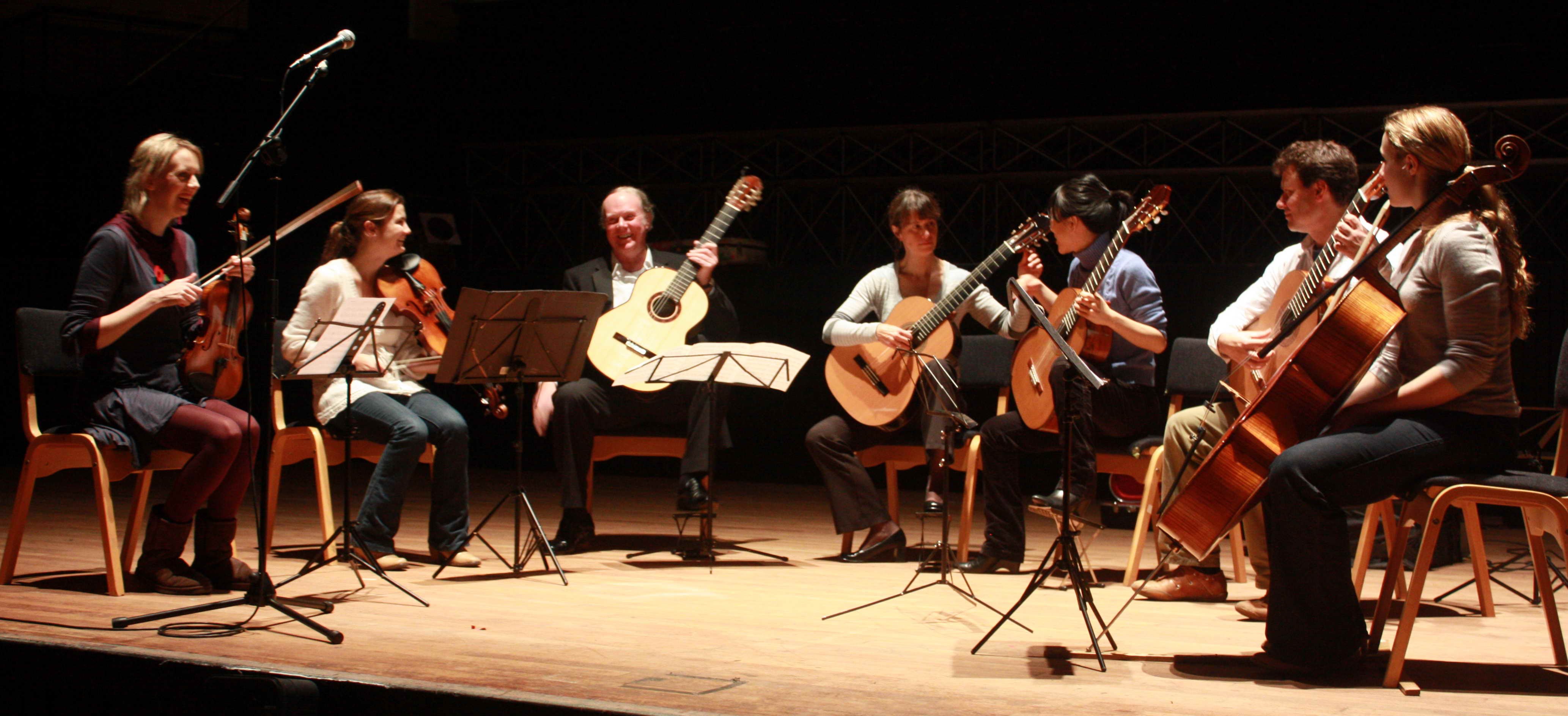John Mills and Cobie Smit.

PROGRAMME
Sonata No.84
Antonio SOLER
(1729-1783)
Soler was a Catalan composer who trained in the
monastery school at Montserrat. He later studied in Madrid with
Domenico Scarlatti the composer of over 550 harpsichord sonatas.
Whilst Soler only wrote 120 such pieces, he has become known as the
Spanish Scarlatti, and these beautiful single-movement compositions
often contain elements of Spanish rhythm and melodic turn of phrase.
Suite in G Major, Op.17/2
(Arr.
E. den Hoed)
Joseph B. de BOISMORTIER
(1689-1755)
There are six movements;
Prelude - Rondeau -
Passacaille - Bouree - Sarabande - Minuets 1 & 2.
Jesu, Joy of Man's Desiring
J.S. BACH (1685-1750)
Continuing in the Baroque period, Bach’s “Jesu,
Joy of Man’s Desiring” is surely one of the most famous and
instantly recognisable melodies in all music.
This wonderful piece appears in the composer’s celebrated
Cantata No. 147.
Solo by
Cobie Smit
Variations on a Theme of Mozart, Op.9
Fernando SOR (1778-1839)
English Suite No.2
John W. DUARTE
John Duarte was a leading figure in the guitar
world during the 2nd half of the 20th century.
Coming from Manchester, he initially trained as a chemist, but his
deep love of music prevailed and he eventually became a respected
teacher of the guitar, composer, author, and music critic. The
English Suite No.2 was first performed in 1980, and incorporates
traditional folk melodies combined with original composed material.
There are three contrasting movements.
L'Encouragement Op.34
Fernando SOR (1778-1839)
Bachianas Brasilieras No.5 (Aria)
Heitor VILLA-LOBOS
The Brazilian composer Heitor Villa-Lobos was
himself a very good guitarist, composing a set of Preludes, 12
Studies and a Concerto, plus other smaller pieces for the
instrument. His favourite composer was in fact Bach, and the set of
Bachianas Brasilieras reflect his passion in a beautiful combination
of Baroque-inspired writing with the colours and atmosphere of
Brazil. No.5 is perhaps
the most famous of the set, written for soprano and eight ‘cellos,
(he was also a gifted ‘cellist,) but was also arranged later by the
composer for voice and guitar for the great Spanish maestro Andres
Segovia. Originally
consisting of two movements, the first of these “Aria,” is featured
this evening in a version for two guitars.
Solos by
John Mills
Amanecer Sobre el Parana
Vincente DEGESE (20th Cent.)
Nortena
Jorge GOMEZ CRESPO (1900-71)
Danza Brasilera
Jorge MOREL (b. 1931)
Argentina has a great guitar tradition, and in
the 20th Century produced a vast number of beautiful
compositions, often influenced by its great folkloric heritage.
Amanecer sobre el Parana
(Dawn on the river Parana,) is a polka, whilst
Nortena is in the
style of a folk song from the north of Argentina. Jorge Morel is a
celebrated guitar/composer who has performed in the United Kingdom
on many occasions, and his lively and rhythmic Danza
Brasilera is perhaps his best-known composition.
Chanson de Matin
Sir Edward ELGAR
(1857-1934)
Dusk
C. ARMSTRONG GIBBS
(1889-1960)
Forgotten Dreams
Leroy ANDERSON (1908-1975)
Recuerdos de la Alhambra
Francisco TARREGA
(1852-1909)